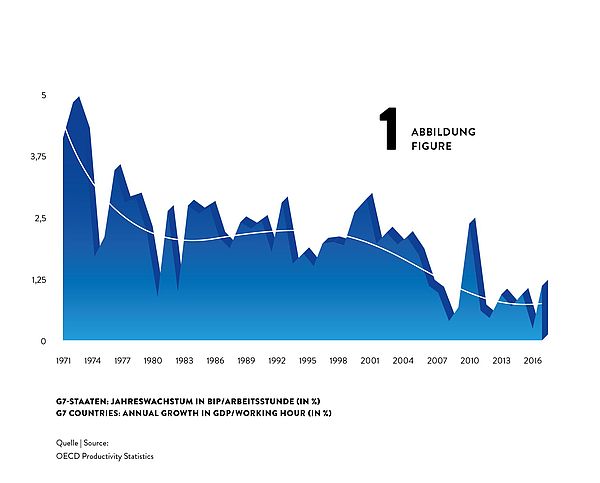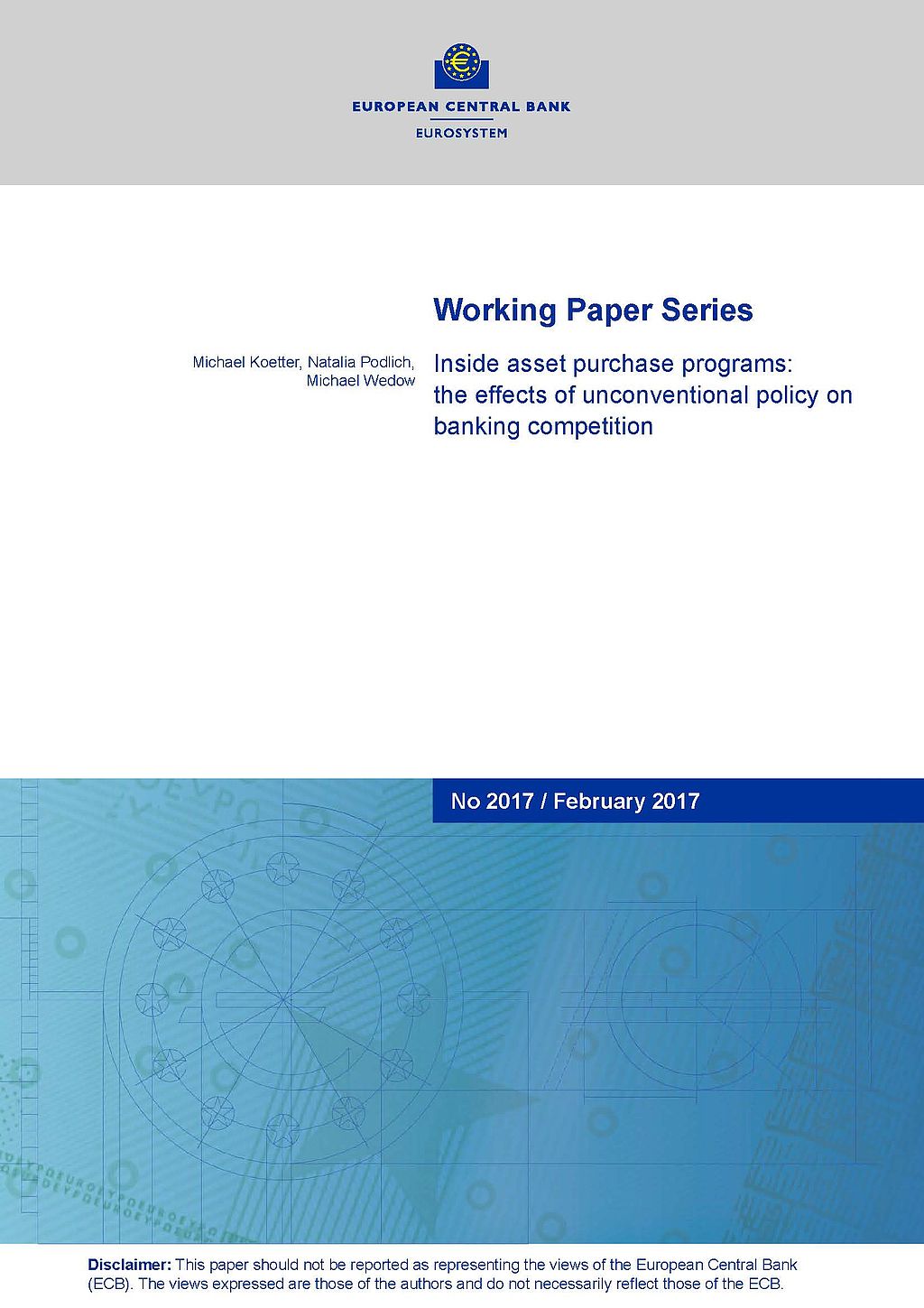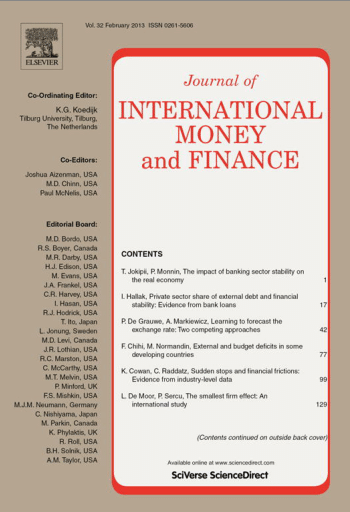Productivity: More with Less by Better
Available resources are scarce. To sustain our society's income and living standards in a world with ecological and demographic change, we need to make smarter use of them.
Dossier

In a nutshell
Nobel Prize winners Paul Samuelson and William Nordhaus state in their classic economics textbook: Economics matters because resources are scarce. Indeed, productivity research is at the very heart of economics as it describes the efficiency with which these scarce resources are transformed into goods and services and, hence, into social wealth. If the consumption of resources is to be reduced, e. g., due to ecological reasons, our society’s present material living standards can only be maintained by productivity growth. The aging of our society and the induced scarcity of labour is a major future challenge. Without productivity growth a solution is hard to imagine. To understand the processes triggering productivity growth, a look at micro data on the level of individual firms or establishments is indispensable.
Our experts

Department Head
If you have any further questions please contact me.
+49 345 7753-708 Request per E-Mail
President
If you have any further questions please contact me.
+49 345 7753-700 Request per E-MailAll experts, press releases, publications and events on “Productivity”
Productivity is output in relation to input. While the concept of total factor productivity describes how efficiently labour, machinery, and all combined inputs are used, labour productivity describes value added (Gross Domestic Product, GDP) per worker and measures, in a macroeconomic sense, income per worker.
Productivity Growth on the Slowdown
Surprisingly, despite of massive use of technology and rushing digitisation, advances in productivity have been slowing down during the last decades. Labour productivity growth used to be much higher in the 1960s and 1970s than it is now. For the G7 countries, for example, annual growth rates of GDP per hour worked declined from about 4% in the early 1970s to about 2% in the 1980s and 1990s and then even fell to about 1% after 2010 (see figure 1).

This implies a dramatic loss in potential income: Would the 4% productivity growth have been sustained over the four and a half decades from 1972 to 2017, G7 countries’ GDP per hour would now be unimaginable 2.5 times as high as it actually is. What a potential to, for instance, reduce poverty or to fund research on fundamentals topics as curing cancer or using fusion power!
So why has productivity growth declined dramatically although at the same time we see, for instance, a boom in new digital technologies that can be expected to increase productivity growth? For sure, part of the decline might be spurious and caused by mismeasurement of the contributions of digital technologies. For instance, it is inherently difficult to measure the value of a google search or another video on youtube. That being said, most observers agree that part of the slowdown is real.
Techno-Pessimists and Techno-Optimists
Techno-pessimists say, well, these new technologies are just not as consequential for productivity as, for instance, electrification or combustion engines have been. Techno-optimists argue that it can take many years until productivity effects of new technologies kick in, and it can come in multiple waves. New technology we have now may just be the tools to invent even more consequential innovations in the future.
While this strand of the discussion is concerned with the type of technology invented, others see the problem in that inventions nowadays may diffuse slowly from technological leaders to laggards creating a wedge between few superstar firms and the crowd (Akcigit et al., 2021). Increased market concentration and market power by superstar firms may reduce competitive pressure and the incentives to innovate.
Finally, reduced Schumpeterian business dynamism, i.e. a reduction in firm entry and exit as well as firm growth and decline, reflects a slowdown in the speed with which production factors are recombined to find their most productive match.
While the explanation for and the way out of the productivity puzzle are still unknown, it seems understood that using granular firm level data is the most promising path to find answers.
What are the Origins of Productivity Growth?
Aggregate productivity growth can originate from (i) a more efficient use of available inputs at the firm level as described above or (ii) from an improved allocation of resources between firms.
Higher efficiency at the firm level captures, e.g., the impact of innovations (Acemoglu et al., 2018) or improved firm organisation (management) (Heinz et al., 2020; Müller und Stegmaier, 2017), while improved factor allocation describes the degree of which scarce input factors are re-allocated from inefficient to efficient firms (‘Schumpeterian creative destruction’) (Aghion et al., 2015; Decker et al., 2021).
Most economic processes influence the productivity of existing firms and the growth and the use of resources of these firms and their competitors as well. The accelerated implementation of robotics in German plants (Deng et al., 2020), the foreign trade shocks induced by the rise of the Chinese economy (Bräuer et al., 2019), but also the COVID-19 pandemic, whose consequences are still to evaluate (Müller, 2021) not only effects on productivity and growth of the firms directly affected but at the same time may create new businesses and question existing firms.
While productivity can be measured at the level of aggregated sectors or economies, micro data on the level of individual firms or establishments are indispensable to study firm organisation, technology and innovation diffusion, superstar firms, market power, factor allocation and Schumpeterian business dynamism. The IWH adopts this micro approach within the EU Horizon 2020 project MICROPROD as well as with the CompNet research network.
As “creative destruction” may also negatively affect the persons involved (e. g., in the case of layoffs, Fackler et al., 2021), the IWH analyses the consequences of bankruptcies in its Bankruptcy Research Unit and looks at the implications of creative destruction for the society, e. g., within a project funded by Volkswagen Foundation searching for the economic origins of populism and in the framework of the Institute for Research on Social Cohesion.
Publications on “Productivity”

Linking Distress of Financial Institutions to Macrofinancial Shocks
in: ECB Working Paper, No. 1749, 2014
Abstract
This paper links granular data of financial institutions to global macroeconomic variables using an infinite-dimensional vector autoregressive (IVAR) model framework. The approach taken allows for an assessment of the two-way links between the financial system and the macroeconomy, while accounting for heterogeneity among financial institutions and the role of international linkages in the transmission of shocks. The model is estimated using macroeconomic data for 21 countries and default probability estimates for 35 euro area financial institutions. This framework is used to assess the impact of foreign macroeconomic shocks on default risks of euro area financial firms. In addition, spillover effects of firm-specific shocks are investigated. The model captures the important role of international linkages, showing that economic shocks in the US can generate a rise in the default probabilities of euro area firms that are of a significant magnitude compared to recent historical episodes such as the financial crisis. Moreover, the potential heterogeneity across financial firms.

Euro Area External Imbalances and the Burden of Adjustment
in: Journal of International Money and Finance, November 2014
Abstract
The objective of this paper is to explore the consequences of the correction of Euro area trade imbalances on real exchange rates. This analysis requires one additional dimension with respect to the standard Global Imbalances framework à la Obstfeld and Rogoff (2005), since the adjustment takes place within and outside the Euro area. Both types of adjustments are analyzed in a three-country general equilibrium model with a tradable and a non-tradable sectors, and heterogeneous firms built upon Pappadà (2011). ECB (CompNet) data are used to measure the differences in firm size and productivity dispersion across Euro area countries. With respect to the surplus country (Germany), countries running a trade deficit (Spain, Italy) are characterised by a productivity distribution with a lower mean and a less fat right tail. This increases the relative price movement associated with the external adjustment because of the limited role played by the extensive margin. We show that the real exchange rate movements are underestimated when the cross-country differences in terms of productivity distributions are neglected.

Corporate Venture Capital, Value Creation, and Innovation
in: Review of Financial Studies, No. 8, 2014
Abstract
We analyze how corporate venture capital (CVC) differs from independent venture capital (IVC) in nurturing innovation in entrepreneurial firms. We find that CVC-backed firms are more innovative, as measured by their patenting outcome, although they are younger, riskier, and less profitable than IVC-backed firms. Our baseline results continue to hold in a propensity score matching analysis of IPO firms and a difference-in-differences analysis of the universe of VC-backed entrepreneurial firms. We present evidence consistent with two possible underlying mechanisms: CVC's greater industry knowledge due to the technological fit between their parent firms and entrepreneurial firms and CVC's greater tolerance for failure.

Micro-Based Evidence of EU Competitiveness: The CompNet Database
in: ECB Working Paper, No. 1634, 2014
Abstract
Drawing from confidential firm-level balance sheets in 11 European countries, the paper presents a novel sectoral database of comparable productivity indicators built by members of the Competitiveness Research Network (CompNet) using a newly developed research infrastructure. Beyond aggregate information available from industry statistics of Eurostat or EU KLEMS, the paper provides information on the distribution of firms across several dimensions related to competitiveness, e.g. productivity and size. The database comprises so far 11 countries, with information for 58 sectors over the period 1995-2011. The paper documents the development of the new research infrastructure, describes the database, and shows some preliminary results. Among them, it shows that there is large heterogeneity in terms of firm productivity or size within narrowly defined industries in all countries. Productivity, and above all, size distribution are very skewed across countries, with a thick left-tail of low productive firms. Moreover, firms at both ends of the distribution show very different dynamics in terms of productivity and unit labour costs. Within-sector heterogeneity and productivity dispersion are positively correlated to aggregate productivity given the possibility of reallocating resources from less to more productive firms. To this extent, we show how allocative efficiency varies across countries, and more interestingly, over different periods of time. Finally, we apply the new database to illustrate the importance of productivity dispersion to explain aggregate trade results.

The Structural Determinants of the US Competitiveness in the Last Decades: A 'Trade-Revealing' Analysis
in: ECB Working Paper, No. 1443, 2012
Abstract
We analyze the decline in the U.S. share of world merchandise exports against the backdrop of a model-based measure of competitiveness. We preliminarily use constant market share analysis and gravity estimations to show that the majority of the decline in export shares can be associated with a declining share of world income, suggesting that the dismal performance of the U.S. market share is not a sufficient statistic for competitiveness. We then derive a computable measure of country-sector specific real marginal costs (i.e. competitiveness) which, insofar it is inferred from actual trade ows, is referred to as 'revealed'. Brought to the data, this measure reveals that most U.S. manufacturing industries are losing momentum relative to their main competitors, as we find U.S. revealed marginal costs to grow by more than 38% on average. At the sectoral level, the "Machinery" industry is the most critical.



